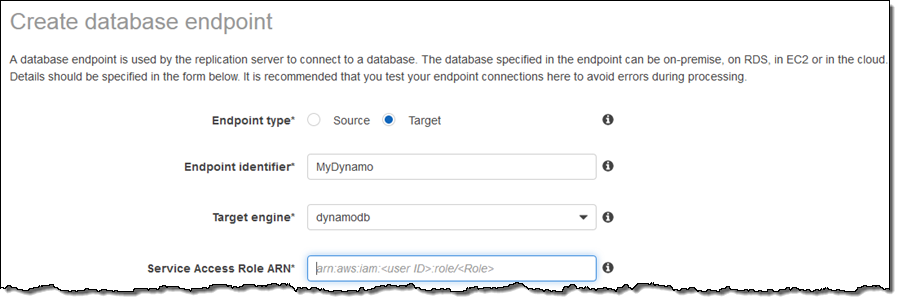AWS News Blog
Catching Up On AWS Announcements from Early 2017
Even though we have published 123 posts so far this year, we simply don’t have the time to cover every significant AWS launch. Also, the newer services are often richer and take more space to describe, adding to our workload. This post (and others to follow each quarter) will outline some of the launches that we did not have time to address earlier.
So, here we go:
- Migration Support for NoSQL Databases
- Comments, Tagging, and Metadata APIs for WorkDocs.
- Email and SMS Integration for Pinpoint
- Usage Type Groups and Linked Account Access for AWS Budgets
- EC2 Systems Manager Support for Hierarchies, Tagging, and CloudWatch Events
These features have already launched and you may already be using them!
Migration Support for NoSQL Databases
With this launch, AWS Database Migration Service can migrate relational databases, NoSQL databases, and data warehouses. The launch adds support for MongoDB databases as a migration source and Amazon DynamoDB tables as a migration target. To get started, create a replication instance and database endpoints for MongoDB and DynamoDB:


Read MongoDB as a Migration Source and DynamoDB as a Migration Target for more information.
Comments, Tagging, and Metadata APIs for WorkDocs
This addition to the Amazon WorkDocs Administrative SDK provides APIs for creating and accessing metadata, tags, and comments:
Metadata – CreateCustomMetadata, DeleteCustomMetadata.
Tags – CreateLabels, DeleteLabels.
Comments – CreateComment, DeleteComment, DescribeComments.
The SDK is available for Java, Python, Go, JavaScript, .NET, PHP, and Ruby. It handles signing of API requests using Sigv4, and is integrated with IAM (roles and permissions), SNS (real-time notifications), and CloudTrail (monitoring).
Email and SMS Integration for Pinpoint
In addition to the existing Mobile Push Notifications, Amazon Pinpoint can now drive user engagement through email and SMS notifications. In order to use this feature you must first enable the desired channel or channels:

To learn more, read about Amazon Pinpoint Channels.
Usage Type Groups and Linked Account Access for AWS Budgets
AWS Budgets let you set cost and usage budgets and receive notification if they are breached (read Managing Your Costs with Budgets and AWS Budgets Update – Track Cloud Costs and Usage).
In order to make AWS Budgets even more useful, we added support for linked accounts and a new usage type filtering option. Organizations that make use of Consolidated Billing to consolidate payment for multiple AWS accounts will benefit from the support for linked accounts. The member accounts can now access their own budgets, while the payer account remains responsible for payment.
The usage type and usage type group filtering dimensions allow you to track your costs and usage from an aggregate level all the way down to the most basic unit of metering. For example, you can create a budget to track all EC2 usage (EC2-Running Hours):

Or a specific usage type, in this case three different sizes of T2 instances:

EC2 Systems Manager Support for Hierarchies, Tagging, and CloudWatch Events
This management service helps you to automatically collect software inventory, apply OS patches, create system images, and configure both Linux and Windows operating systems.
The Parameter Store (one of the service’s most popular features) stores configuration data such as database access strings and passwords in encrypted form. It is accessible from the CLI, APIs, and SDKs; this allows AWS Lambda functions and code running inside of Amazon Elastic Container Service (Amazon ECS) containers to access the same parameters.
We added support for storage of parameters in hierarchical form, giving you the ability to group them by organization, application, and so forth. You can also create parallel sets of parameters for use in development, testing, and production environments. To create a hierarchy of parameters, use names that include one or more “/” characters:

We also added support for tagging. You can query parameters based on tags and you can add IAM permissions to parameters via tags.
Finally, the Parameter Store is now a source of CloudWatch Events. You can now track changes to your parameters, perhaps making sure that they are not inadvertently changed in a way that could break an existing application:

Keeping Up
In addition to reading this blog on a regular basis, you can also follow me and AWS Cloud on Twitter. You can also check out the AWS What’s New and subscribe to the RSS Feed.
— Jeff;